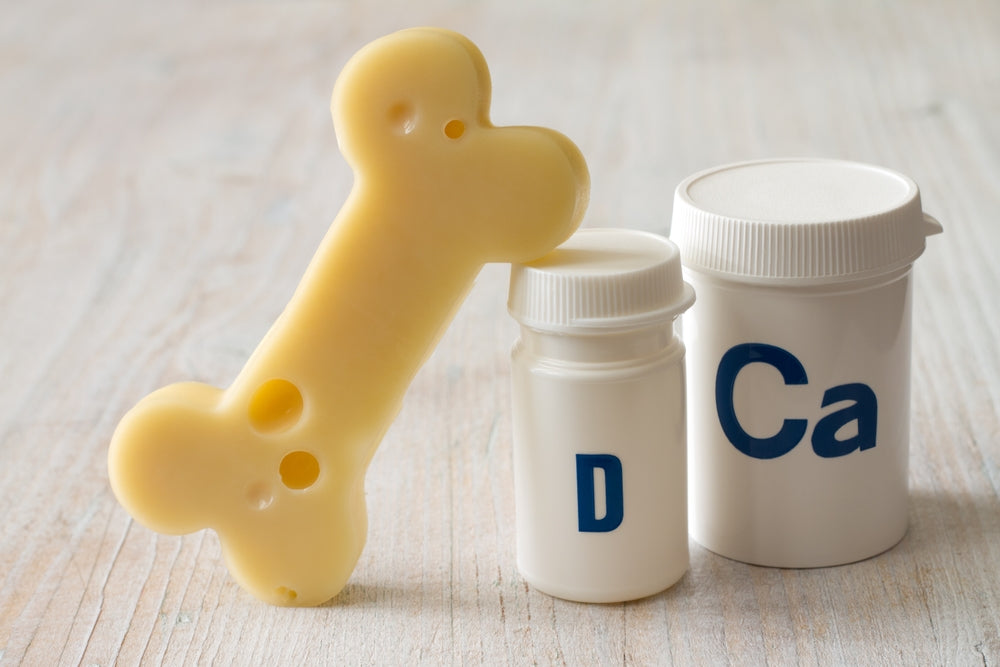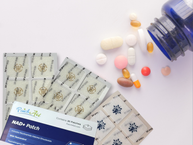We hear a lot about chronic conditions such as overweight and obesity, heart disease, high blood pressure, and diabetes, but bone conditions are also prevalent in the US. Rickets and low bone mineral density, or osteoporosis, are common and can be costly and debilitating, but proper nutrition can help prevent many cases.
Vitamin D is one of the most important vitamins for bone health, but many people don’t get enough. PatchAid Vitamin D3 Patches have vitamin D, calcium, magnesium, and vitamin K2, and are easy to use. Ask your healthcare provider if they may be right for you.
Vitamin D and Bone Health Through the Lifespan
Adequate vitamin D is essential for bone health. In children, vitamin D deficiency can cause rickets. That’s when bones are softer than they should be because mineralization is not complete. The result can be bow legs and poor posture because bones are not strong.
In adults, low vitamin D can lead to osteoporosis, or low bone mineral density. Osteoporosis can increase the risk of breaking bones when falling or, in more severe cases, even stepping off of a curb or coughing.
Vitamin D has these effects for a few reasons. One is that it helps your body absorb calcium from food. Another reason is that it helps your body use that calcium to make bones stronger. Vitamin D regulates hormones, such as parathyroid hormone (PTH) and osteocalcin. Levels of these hormones help determine whether calcium stays in bones and increases bone mineral, or goes into your bloodstream and decreases bone mineral.
Vitamin D Requirements for Bone Health
A general recommendation for a young person who lives at a low latitude is to get about 15 minutes of sun exposure to the hands and face daily. That’s because your skin, liver, and kidneys all pitch in to help make active vitamin D, or vitamin D3, when your skin receives UV radiation from the sun.
However, you can also get vitamin D from food. Irradiated mushrooms, whole eggs, fatty fish such as mackerel and salmon, and vitamin D-fortified milk have vitamin D. Fortified orange juice and soy milk, yogurt, fortified breakfast cereal, and pudding often have vitamin D, too. The recommendation for many people is to get about 400 IU of vitamin D daily, but many people fall short.
Reasons for Vitamin D Deficiency
Vitamin D deficiency is more common than we think. There may be additional, more recent, causes for alarm regarding vitamin D deficiency and low bone mineral density. These are some examples of reasons why children and adults may be getting less exposure to the sun than they used to.
- Increased time indoors in front of screens
- Less likelihood of walking to school, whether because of less walking overall or because of more children going to schools outside of their neighborhoods
- Less walking overall
Another reason for lower vitamin D levels is lower per capita milk consumption. While some non-dairy milk substitutes, such as almond and soy milk, have vitamin D added, it’s not required. By law, vitamin D is required to be in fortified milk.
Vitamin D Supplements for Bone Health
Vitamin D supplements can help if you are low in vitamin D or your healthcare provider suggests taking them. You can talk to your doctor about risk factors. You can also ask for a vitamin D test. It’s an easy and common blood test that doesn’t require you to fast. It tells you your vitamin D levels.
If you need vitamin D, there are many forms of supplements. Soft gels and liquids are examples. However, they may not be desirable if you don’t like swallowing vitamins or can’t take pills. Also, they may not have related nutrients that you depend on. For example, calcium, vitamin K, and magnesium are all essential for bone health.*
Vitamin D3 Patches for Bone Health
The Vitamin D3 Plus Calcium Patch and the Vitamin D3 plus K3 Patch by PatchAid have over 5000 IU of vitamin D3. They also have these nutrients.*
- Calcium: essential for bone, muscle, and nerve health, and often deficient, especially among people who don’t eat dairy products
- Vitamin K: necessary for bone and blood health, and not common in the form of vitamin K2
- Magnesium: needed for normal mood and bone, muscle, and nerve health, and found in foods such as dark chocolate, nuts, and green vegetables.
PatchAid Patches are free from gluten, soy, latex, and sugar. Plus, it’s easy to use them.
- Select an area of skin. The vitamin patch will stick better if you choose an area of skin without hair, lotion, or oil residues such as your shoulder, back, or hip. Clean and dry the skin.
- Remove the vitamin patch from the release liner.
- Adhere the vitamin patch to your skin, pressing firmly.
- For best results, it is recommended to wear PatchAid vitamin patches for 8 hours. There is no additional benefit wearing the vitamin patch longer than 8 hours.
- When finished, remove the vitamin patch, fold it in half, and discard.
- Repeat with a new vitamin patch the next day.
You can use multiple PatchAid Patches at once.
More Ways to Support Bone Health
Of course, vitamin D isn’t the only essential element for healthy bones. Getting enough calcium, magnesium, and vitamin K is a good step, but there is more you can do. For example, staying active with weight-bearing activities helps strengthen bones. In addition, it seems that eating less red meat may help.
It’s one of the most commonly deficient nutrients in the US, but vitamin D is essential for optimal bone health.* PatchAid Vitamin D3 Patches are designed with total bone health in mind, and include calcium and magnesium, which are minerals in bone, and vitamin K, which supports the health of bone matrix.* Talk to your healthcare provider before using any nutritional supplement and which other PatchAid Patches may be good for you.
*The Food and Drug Administration has not evaluated these statements. PatchAid patches are not intended to diagnose, treat, cure or prevent any disease. Anyone with a medical condition should seek the advice of a licensed medical practitioner. Individual results may vary.







